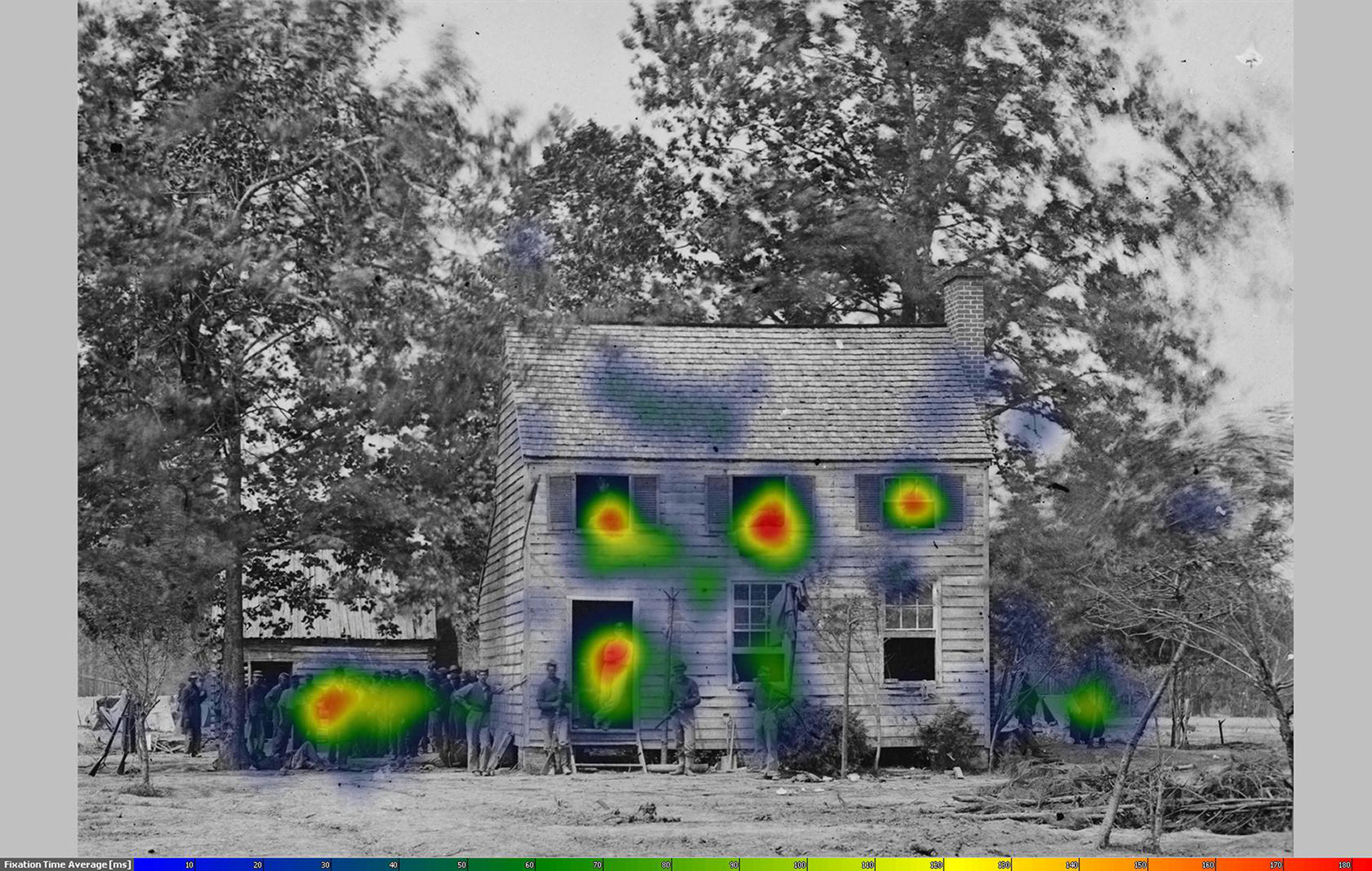Eye tracking of Civil War photos may help curators

People experience pictures differently depending on the photograph’s content and what most interests the viewer. Shamsul Abu Bakar, who recently earned his doctorate in the College of Architecture and Urban Studies, used eye-tracking technology to chronicle what people focus on when looking at U.S. Civil War photos.
This knowledge may aid in developing interpretive exhibits at U.S. National Park Civil War battlefield sites that are tailored for different groups based on gender, age group, or relation to Civil War veterans.
“The content of pictures affects people’s varied perception of the battlefield and what took place there,” said Bakar, who became interested in doing the study as part of his goal of preserving such historic sites in his native Malaysia. He began the study by making booklets containing 40 Civil War photos he obtained from the U.S. Library of Congress.
Using the photos, Bakar surveyed people at five U.S. Civil War battlefields and also on the Virginia Tech campus to rate each picture for its interest. This led to using three types of eye-tracking methods to analyze in what order, how long, and how many times a person looked at various elements in each illustration.
“We wanted to see what activities, characteristics, or features of photos draw the most interest,” Bakar said. “People tend to be most interested in complex pictures that have an element of mystery and sense of dynamic military actions. In addition, human presence in the pictures in the pictures consistently attracts people’s visual attention.”
As an example, he showed a photo of a war-torn house used as a Civil War field hospital. The analysis of the eye-tracking data showed that viewers tended to look at the window in the house sooner, longer, and more than other elements in the picture. It was almost as if they were trying to ascertain what was in the house.
“This study helps us determine if pictures are conveying what was intended,” said Patrick Miller, professor and associate dean for graduate programs and outreach in the College of Architecture and Urban Studies. He also has served as Bakar’s graduate adviser. “We also can use the eye-tracking data to develop mobile applications to individualize the experience people have at battlefields and associated exhibits.”
The data they gathered in this study showed that people are highly interested first in the war-caused destruction, Bakar said. The next most interesting elements were weapons and battle positions — things that indicate what is about to happen, followed by pictures that depict a soldier’s life. In Civil War pictures, buildings, especially hospitals, churches, military headquarters, are the next thing that draws most people’s interest. Least interesting are battlefield views and finally people in posed positions. Regardless of interest, viewers’ attention always focuses on faces in a picture especially if it’s a group of people and, in particular, a person who has something different — a different hat, different pose, etc.
The participants’ eye movements are tied to the content of the photos, Bakar said. The more visually complex the photo, the more selective viewers are about where they focus. Their eyes scan the image more and take time to focus on particular content.
“The information we gathered will be useful to park managers and interpretive designers when developing exhibits and helping people learn about Civil War history,” Bakar said. This includes findings regarding the appropriateness of using images that some would consider gruesome, such as photos of dead soldiers. Such images may be key educational materials to convey the horrific events that took place on a battlefield, but with certain limitations and controls.
Bakar hopes to use what he has learned through the Civil War photo eye-tracking study to help establish preservation efforts of historical battlefield sites in his native Malaysia when he returns this fall to teach at a university there.
Miller and Bakar also will do a report for the U.S. National Park Service on what they learned about using photographic images for Civil War exhibits. In addition, they will publish some of the data they gathered at the five parks. The battlefield parks were Chickamauga and Chattanooga National Military Park, Shiloh National Military Park, Manassas National Battlefield Park, Antietam National Battlefield, and Gettysburg National Military Park.

Heatmap analysis tracks viewing
The eye-tracking, heat map analysis shows where people's visual attention came to rest in the image. It shows that people are highly drawn to human presence compared to the architectural details of the field hospital. Their attention is drawn for a longer period of time to the presence of people standing or sitting next to the windows.






